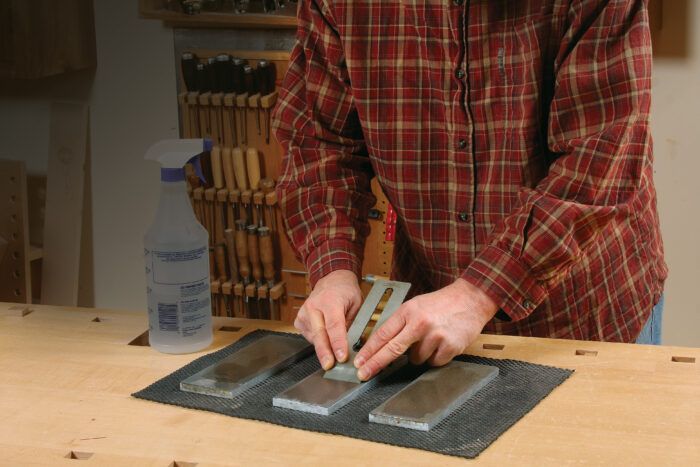Why you need a cabinet scraper
It's the best tool for cleaning up tearout before final smoothing. Here's how to set up a cabinet scraper perfectly.
Synopsis: A bit less refined than a card scraper, a cabinet scraper is used to remove tearout and machining marks created by the jointer and planer and tracks left behind by handplanes. It’s a bit tricky to use, but it does a wonderful job if used properly, and you really do need one. Here, furniture master Phil Lowe teaches you how to sharpen and hook the blade for best performance, and how to set up the tool for use on quirky woods, where it really shines.
Unlike the more familiar card scraper, the cabinet scraper is not made to leave a finished surface. Instead, it’s a rougher tool, used to remove tearout and machining marks created by the jointer and planer and tracks left by handplanes before you begin final surface preparations with sandpaper and a card scraper.
It’s a bit of a quirky tool. although the blade looks like a card scraper and cuts with a hook, it’s a bit thicker and mounted in a body similar to that of a spokeshave. But the sole is larger than a spokeshave’s. this bigger sole prevents you from creating a divot—which can happen with a card scraper if you concentrate too much on any one spot— because it forces you to work a larger area of the surface.
A cabinet scraper does a great job if set up properly. I’ll show you how to sharpen the blade and how to set it to take nice shavings. I’ll also give you a few tips for using it and for correcting some common problems.
Hook the blade
Although the cabinet scraper’s blade is beveled (45°), it actually cuts with a hook turned onto the cutting edge. after filing the bevel to expose fresh steel, hone the bevel and polish the back on your sharpening stones. I work my way through four grits—1,000, 5,000, 8,000, and 16,000—but you could use similar grits and just go through 8,000.
Now you can turn the hook. Hold the burnisher at 45° and burnish the bevel to remove and flatten out any remaining scratches. Next, take several strokes along the cutting edge, raising the burnisher with each stroke until it is square to the blade.
After turning the hook, I lay the blade flat on my bench with the hook facing up and run the tip of my burnisher along the hook. the tip is shaped like a cone, and adjusts the hook to a consistent angle, improving its cutting ability (you can buy a burnisher like this from lowe for $65 at furnituremakingclasses.com).
The blade is ready to cut shavings now, so put it back in. tighten the clamping bar, and set the cut depth with the thumbscrew.
For the full article, download the PDF below:
Fine Woodworking Recommended Products

Marking knife: Hock Double-Bevel Violin Knife, 3/4 in.

Veritas Micro-Adjust Wheel Marking Gauge

Suizan Japanese Pull Saw





















Log in or create an account to post a comment.
Sign up Log in